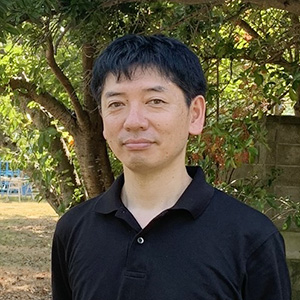FACULTY
教員紹介
FACULTY

Professor
TANAKA Takahiro
田中 貴宏 教授
都市・建築計画学研究室
Urban and Architectural Planning Laboratory
専門
都市計画・まちづくり・都市環境・GIS
UrbanPlanning, Community Design, Urban Environment, GIS
研究の概要説明
都市や地域、建築空間で生じる様々な現象のメカニズム解明に向けた研究を進めています。具体的には災害、環境(気候環境、水環境、生態環境、地盤環境、エネルギー)、社会(人々の生活、人流、人口動態など)を対象に、GIS(地理情報システム)等のデジタル技術を活用し、これらの現象を空間的に把握することを目的としています。また、それらの科学的理解(エビデンス)に基づく、都市や地域、建築の計画手法の開発を進めています。 そして一方で、実践活動として、地域の行政機関の皆さん、住民の皆さんと協働し、都市計画、まちづくり、建築づくりを進めています。
We are conducting research to elucidate the mechanisms of various phenomena occurring in urban, regional, and architectural spaces. Specifically, we target disasters, environment (climatic environment, water environment, ecological environment, ground environment, energy), and society (people’s lives, human flow, population dynamics, etc.), and aim to understand these phenomena spatially by utilizing digital technologies such as GIS (Geographic Information System). We are also developing urban, regional, and architectural planning methods based on this scientific understanding (evidence). On the other hand, as practical activities, we collaborate with local government agencies and residents to promote urban planning, community development, and architecture.
現在の研究テーマ
・環境の改善・向上のための建築・都市・ランドスケープデザインに関する研究
・防災・減災のための都市・ランドスケープデザインに関する研究
・人口減少を背景とした地方都市版コンパクトシティに関する研究
・人口減少が著しい農村地域の将来に向けた建築・地域デザインに関する研究
・市街地の賑わいや魅力向上に向けた都市デザイン手法に関する研究
・Architecture, urban and landscape design with natural environment
・Urban and landscape design for disaster prevention and mitigation
・Compact city design for provincial cities with declining population
・Architectural and regional design for the future of rural areas where population decrease is remarkable
・Urban design for revitalizing and improving the liveliness and attractiveness of urban spaces
研究室サイト
-
都市・建築計画学研究室
広大研究者総覧
研究・プロジェクト内容
環境の改善・向上のための建築・都市・ランドスケープデザインに関する研究
近年、地球温暖化や都市ヒートアイランドにより、都市温暖化現象が深刻化しており、都市部における夏季の熱環境緩和が求められています。また、地球規模の気候変動の緩和に向けて再生可能エネルギーの活用なども都市には求められています。そこで、熱環境観測、数値シミュレーション(CFD等)といったエビデンスに基づいた熱環境緩和型建築・都市・ランドスケープのデザイン手法の開発や、再生可能エネルギー利用型まちづくりに関する研究を進めています。
Architecture, urban and landscape design with natural environment
In recent years, climate change and urban heat island have made the urban warming phenomenon more serious, and there is a need for mitigation of the summer thermal environment in urban areas. In addition, cities are also required to utilize renewable energy sources to mitigate global climate change. Therefore, we are developing design methods for architectures, cities, and landscapes that mitigate thermal environments based on evidence from thermal environment observations and numerical simulations (CFD, etc.), and are conducting research on urban planning that uses renewable energy.

防災・減災のための都市・ランドスケープデザインに関する研究
近年、豪雨災害が頻発しており、また南海トラフ地震のような大規模地震の発生も予測されています。そのような状況の中、都市計画においても防災・減災対策が求められています。そこで、GISや洪水シミュレーション等を活用した科学的分析(リスク分析)をもとに、適切な土地利用計画やグリーンインフラ計画(緑地機能の活用)を行う手法の開発や、住民協働型の安全まちづくりに関する研究を進めています。
Urban and landscape design for disaster prevention and mitigation
In recent years, heavy rain disasters have been occurring frequently, and large-scale earthquakes such as the Nankai Trough Earthquake are predicted to occur. Under these circumstances, disaster prevention and mitigation measures are required in urban planning. Therefore, we are developing methods for appropriate land use planning and green infrastructure planning based on scientific analysis (risk analysis) using GIS and flood simulation, and conducting research on safe city planning in collaboration with residents.
人口減少を背景とした地方都市版コンパクトシティに関する研究
現在、多くの地方都市では、人口減少、空き家増加が見られています。そのような状況の中「コンパクトシティ」は、生活利便性や行政効率の向上につながり、また地球環境や地域環境の改善に寄与するという点で注目されています。特に、低密度に拡大した都市を長期的にコンパクトシティに変えていくことは環境や行政効率の視点から見てもメリットが大きい。そこで、この研究では都市のコンパクト化によるメリット(環境改善、生活利便性、経済的効果等)とデメリット(居住地移動のコスト等)を定量的に評価し、最終的には目指すべき都市像を提案することを目的としています。
Compact city design for provincial cities with declining population
Currently, many provincial cities are experiencing a decline in population and an increase in the number of vacant houses. Under such situations, “Compact Cities” are attracting attention for their convenience of living and administrative efficiency, as well as for their contribution to improving the global and local environment. In particular, the long-term changes of cities that have expanded to low densities into compact cities is beneficial from the perspective of the environment and administrative efficiency. Therefore, the purpose of this study is to quantitatively evaluate the advantages (environmental improvement, living convenience, economic benefits, etc.) and disadvantages (cost of moving residence, etc.) of urban compactness, and ultimately to propose a vision of the city that should be aimed for.
人口減少が著しい農村地域の将来に向けた建築・地域デザインに関する研究
農村地域は、農地・森林といった豊富な自然環境資源を有しており、我が国の農業や林業を支えるとともに、国土保全や景観形成といった役割も担います。一方、多くの農村地域は人口減少・高齢化が顕著であり、一部では消滅が危惧される農村集落も見られます。このような地域では、「小さな拠点」のような建築的解決法も模索されています。この研究では、農村地域を対象に、建築デザイン・地域デザインの観点から、それぞれの地域に応じた活性化手法、維持手法、撤退手法の開発を行うことを目的としています。
Architectural and regional design for the future of rural areas where population decrease is remarkable
Rural areas have rich natural environmental resources such as farmland and forests, which not only support Japan’s agriculture and forestry industries, but also play a role in land conservation and landscape development. On the other hand, many rural areas are experiencing a marked population decline and aging, and some rural villages are in danger of disappearing. In such areas, architectural solutions such as “small hubs” are being sought. The purpose of this study is to develop revitalization, maintenance, and withdrawal methods for each rural community from the perspective of architectural design and community design.
市街地の賑わいや魅力向上に向けた都市デザイン手法に関する研究
近年、地方都市の中心市街地は経済活力を失い、また、それと同時に賑わいや魅力も失いつつあります。しかし、その一方で公共空間(道路、公園、公共建築物等)の利活用や、ウォーカビリティ(歩きやすさ)の向上等を通して、賑わい創出や魅力向上を図ろうという取り組みがなされています。この研究では、そのような取り組みの実態調査を踏まえ、賑わい創出や魅力向上に向けた都市デザイン手法の提案を行うことを目的としています。
Urban design for revitalizing and improving the liveliness and attractiveness of urban spaces
In recent years, the downtown areas of provincial cities have lost economic vitality and, at the same time, their liveliness and attractiveness. At the same time, however, efforts are being made to create liveliness and improve attractiveness through the utilization of public spaces (roads, parks, public buildings, etc.) and the improvement of walkability. The purpose of this study is to propose urban design methods for place making and improving attractiveness, based on a survey of such efforts.